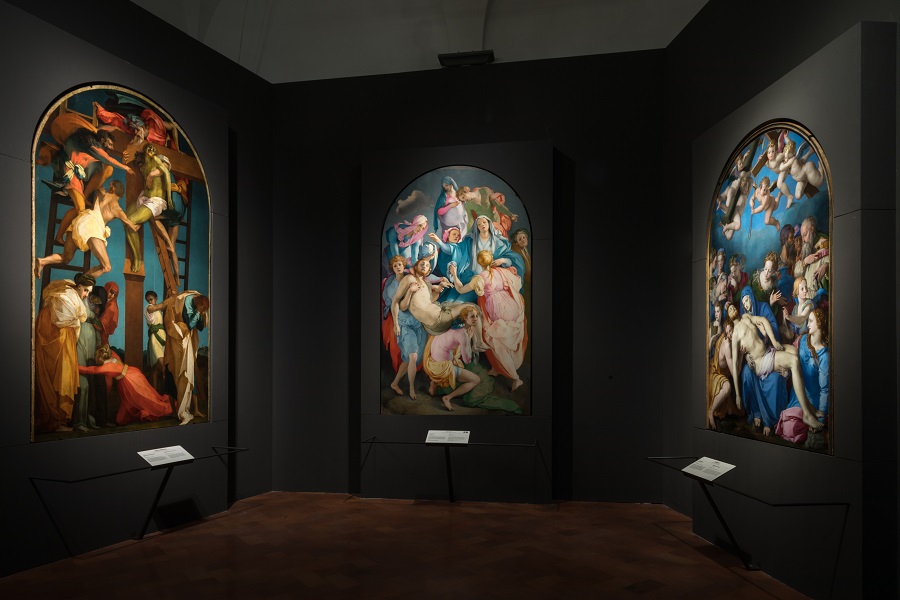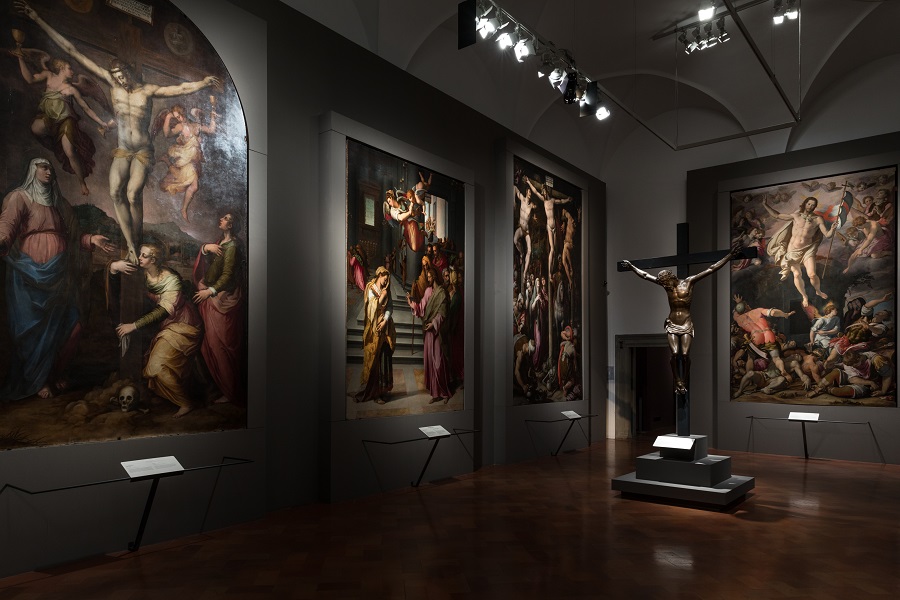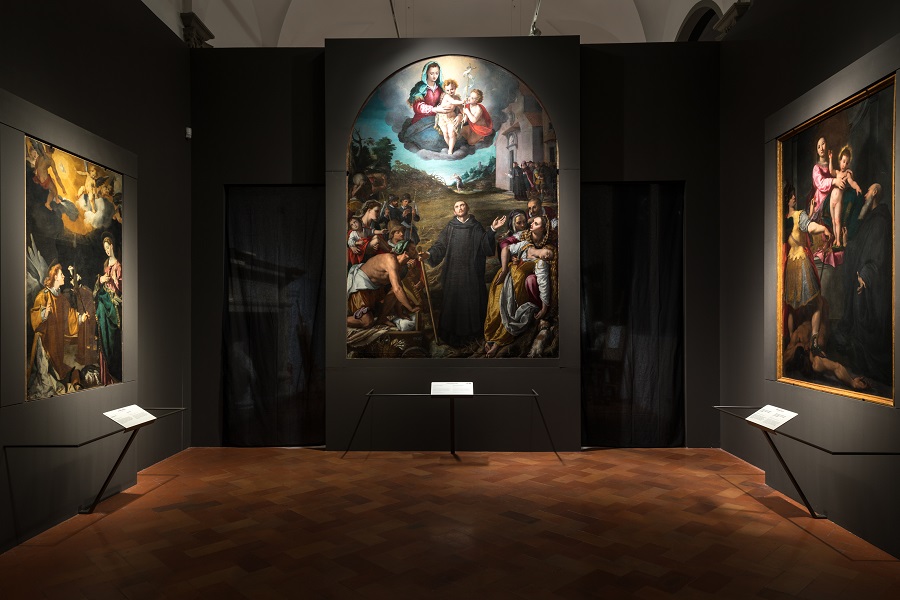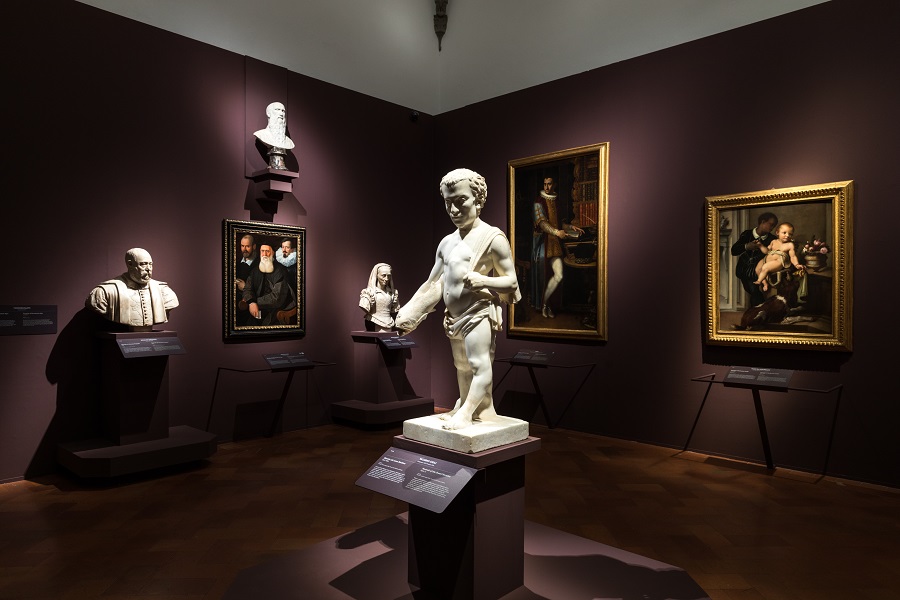By
Cecilia Sandroni
A unique event bringing together, for the very first time, a collection of absolute masterpieces by Michelangelo, Andrea del Sarto, Rosso Fiorentino, Bronzino, Giorgio Vasari, Santi di Tito and Giambologna from Italy and abroad, many of them specially restored for the occasion.
Italy’s Palazzo Strozzi is currently hosting The Cinquecento in Florence, a spectacular exhibition devoted to the art of the second half of the 16th century in the city, bringing together works by such artists as Michelangelo, Andrea del Sarto, Rosso Fiorentino, Pontormo, Bronzino, Giorgio Vasari, Santi di Tito and Giambologna.
The final act in a trilogy of exhibitions curated by Carlo Falciani and Antonio Natali that began with Bronzino in 2010 and was followed by Pontormo and Rosso Fiorentino in 2014, the exhibition explores an era of outstanding cultural and intellectual talent, the second half of the 16th century in Florence, in a heated debate between the “modern manner” and the Counter-Reformation; between the sacred and the profane. An extraordinary age for the history of art in Florence, marked by the Council of Trent and by the personality of Francesco I de’ Medici, one of the greatest figures in the history of courtly patronage of the arts in Europe.
The exhibition is showcasing over seventy paintings and sculptures that capture the cultural climate of those years. Palazzo Strozzi’s exhibition halls will be hosting a dialogue, in a layout that is at once chronological and thematic, involving both sacred and secular works by such great masters of the age as Michelangelo, Pontormo and Rosso Fiorentino, but also by painters of the quality of Giorgio Vasari, Jacopo Zucchi, Giovanni Stradano, Girolamo Macchietti, Mirabello Cavalori and Santi di Tito, or sculptors of the calibre of Giambologna, Bartolomeo Ammannati and Vincenzo Danti, to name but a few of those who were involved in the projects for the Studiolo and the Tribune and in the drive to redecorate Florence’s churches to reflect the precepts of the Council of Trent. These men were artists capable of playing on several different registers of expression, of revisiting their own training at the hands of the great masters in the early part of the century in an effort to tailor it to the needs of a complex, changing world dashing headlong towards the era of Galileo Galilei, open to a new vision of nature and art of European breadth and scope.
An important cooperation network has been forged with local and international museums and institutions and a major restoration campaign has come to full fruition in the exhibition. Seventeen works of art have been restored for the occasion, making the exhibition an outstanding opportunity for the enhancement of the region’s art heritage. The crucial role in the campaign played by the Friends of Florence Foundation has led to the restoration of six works of art, with Pontormo’s Deposition heading the list together with the entire Capponi Chapel in Santa Felicita for which it was painted, and continuing with Bronzino’s Immaculate Conception and Alessandro Allori‘s Christ and the Adulteress and The Miracles of St. Fiacre altarpieces and with two sculptures, Michelangelo’s River God and Giambologna’s Crucifix.
The exhibition runs until January 21, 2018.
All photographs courtesy of Palazzo Strozzi
Cecilia Sandroni
Cecilia Sandroni is a member of the Foreign Press in Rome, in addition to being an expert of international relations in communication. Her skills range from film to photography with a passion for human rights. Independent, creative, concrete, she has collaborated with major Italian and foreign institutions for the realization of cultural and civil projects.








No Comments Yet!
You can be first to comment this post!